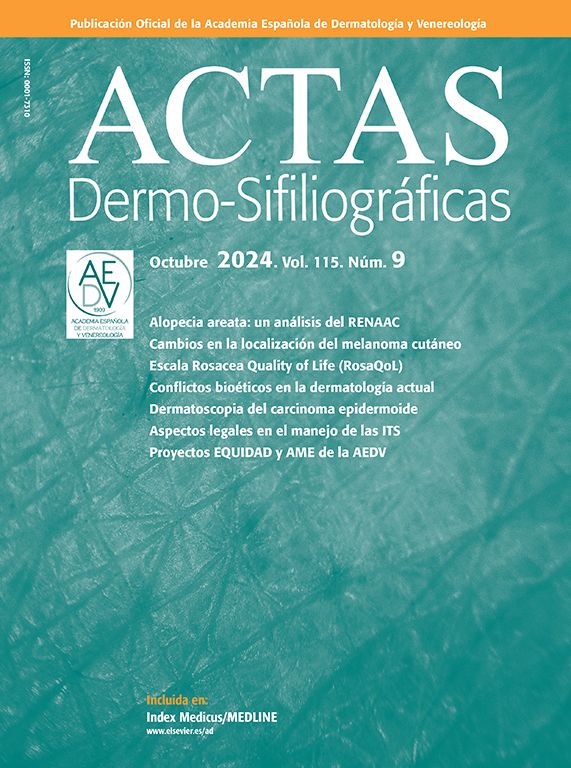We wanted to share an observation that we believe is of both dermatological and general interest.
The authors are avid video game players. Many of these games, especially “role-playing” or “life simulation” ones, often include a character creation program with the option to choose certain physical characteristics. The technical quality of the images is constantly improving, and in line with social demands, there are increasingly more options to represent all types of bodily features.
For example, the well-known game The Sims (Fig. 1) is a life simulation game that allows players to design their character's personality, physical appearance, and home. Since its launch in 2000, it has been very successful, and new versions continue to be released. The latest updates allow players to create an avatar with stretch marks and scars (since February 2023) and vitiligo (since February 2024). Specifically, the game offers over a thousand skin tones to choose from, based on a gradation of basal tones classified as neutral, warm, cool, and various. On the face, melanocytic nevi, and ephelides can be added. There is also the option to design macules of several centimeters in the cervicofacial region and on the trunk. These macules can be colored brown (suggesting medium congenital melanocytic nevi) or erythematous-violaceous (like a vascular malformation). As we mentioned, a character can also be created with vitiligo, by selecting different patterns of involvement (periorificial, segmental, or generalized). Characters can be given androgenetic alopecia, regardless of sex, although the alopecia pattern will be that described as male (Hamilton types II and VII). Different amounts of hair can be added to arms, legs, décolletage, and back (simulating hirsutism). Furthermore, this game offers several details for skin customization.
The role-playing game Dragon's Dogma 2 has a very comprehensive character creator program and a highly realistic aesthetic. In the facial area, rosacea-like perinasal erythema and telangiectasias can be added, along with signs of aging such as wrinkles, skin laxity, and solar lentigines. It also includes a pattern of facial hyperpigmentation on the upper half of the face, which the authors have not been able to identify with a specific dermatological condition. It is interesting because this hyperpigmentation has generated special interest among players, who colloquially refer to it on social media as “inverse vitiligo” (Fig. 2(1)). This game also stands out for its ability to faithfully represent different phototypes, in contrast to the predominance of fair skin observed in dermatology texts.1
Other examples of games that include skin conditions in their character creators are Fortnite, Diablo IV, and Baldur's Gate 3 (Fig. 2). In all of them, a character with vitiligo can be built, and in the latter, the affected body surface can be specified.
Although this letter's aim is not to conduct a systematic review of all existing games, one can infer the importance of skin in their design. We have had the opportunity to read articles describing the presence of skin conditions in television series2 and painting.3 Video games have a unique characteristic compared to these: the player is both a viewer and a designer. They can build a realistic character, in their own image, or they can experiment with different bodies. There is no ideal character, no imposed beauty standard.
In conclusion, the authors are pleased to find in video games a resource for the visibility and normalization of skin conditions, countering society's current trend towards aesthetic homogenization.
Declaration of generative AI and AI-assisted technologies in the writing processThe authors declare that they have not used artificial intelligence in this work.
FundingNone declared.
Conflicts of interestNone declared.








